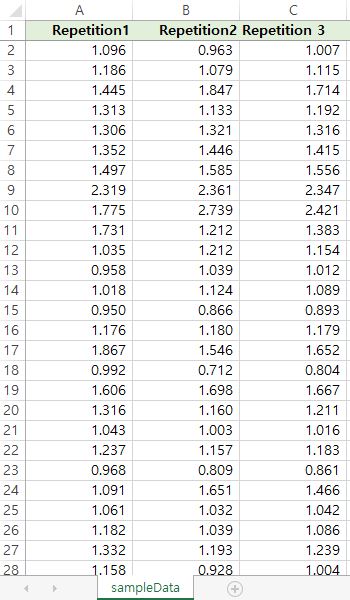Academic Share
Central Imaging Core Lab
How to cite the contents of this page and the Repeatability Coefficient (RC) Calculator?
Park JE, Han K, Sung YS, Chung MS, Koo HJ, Yoon HM, Choi YJ, Lee SS, Kim KW, Shin Y, An S, Cho HM, Park SH. Selection and Reporting of Statistical Methods to Assess Reliability of a Diagnostic Test: Conformity to Recommended Methods in a Peer-Reviewed Journal. Korean J Radiol. 2017 Nov-Dec;18(6):888-897.
Full Text
1. What is reliability?
It refers to how the results of a test or a measurement are consistent when obtained repeatedly.
We use the term "reliability" in this page as an umbrella term to cover various concepts such as
reproducibility, repeatability, and agreement except when we distinguish "reliability parameter"
and "agreement parameter" which is explained below.
2. Repeatability vs. Reproducibility?
According to QIBA Technical Performance Working Group (2015);
Reproducibility is referred to a technical assessment, which is based on reproducibility
algorithm process. It might be required in multiple sites or clinical trial due to the reliability of the
Quantitative Imaging Biomarkers (QIB) measuring system.
Reference: QIBA Technical Performance Working Group. Quantitative Imaging Biomarkers: A Review of
Statistical Methods for Technical Performance Assessment. Statistical methods in medical research.
2015;24(1):27-67. doi:10.1177/0962280214537344.
3. What statistical tests or parameters should be used?
| Dichotomous or nominal data | Ordinal data | Continuous data |
|---|---|---|
|
Kappa Proportion of agreement |
Weighted kappa Intraclass correlation |
Reliability parameters : Intraclass correlation coefficient (ICC) Concordance correlation coefficient (CCC) Agreement parameters : Within-subject standard deviation (wSD) Repeatability coefficient (RC) and Reproducibility coefficient (RDC) Coefficient of variation (CV) Bland-Altman limits of agreement (LOA) |
Table note: ICC has three different models including one-way random, two-way random, and two-way mixed models, and can use either consistency or absolute agreement assumptions. As ICC value for the same set of data may change according to the model and the assumption used, it is desirable to describe the model and the assumption.
4. Reliability parameters vs. Agreement parameters?
These are crucial parameters for a test or a measurement to be used to monitor changes of a particular disease/health state over time.
Reliability parameters
It is referred to the intraclass correlation coefficient (ICC) or concordance correlation coefficient,
describes whether the differences among subjects in the study can be clearly defined.
For example; ICC = between-subject variability / (between-subject variability + within-subject variability)
Agreement parameters
It accesses exactly the closeness among outcomes from the repeated measurements, so the relative
comparison of reliability and assessment of absolute measurement uncertainties prefer to use this.
For more information, please refer to "J Clin Epidemiol 2006;59:1033-1039."
5. Repeatability coefficient (RC) calculator
REMEMBER: RC is an agreement parameter that is essential for a quantitative biomarker to monitor changes of a particular disease/health state in a longitudinal follow up as it is the smallest change that is detectable.
Use this easy and fast RC calculator for your analysis! RC can be calculated not only for two sets of repeated measurements but also for more than two sets of repeated measurements.

How to cite the contents of this page and the Repeatability Coefficient (RC) Calculator?
Park JE, Han K, Sung YS, Chung MS, Koo HJ, Yoon HM, Choi YJ, Lee SS, Kim KW, Shin Y, An S, Cho HM, Park SH. Selection and Reporting of Statistical Methods to Assess Reliability of a Diagnostic Test: Conformity to Recommended Methods in a Peer-Reviewed Journal. Korean J Radiol. 2017 Nov-Dec;18(6):888-897.
Full Text